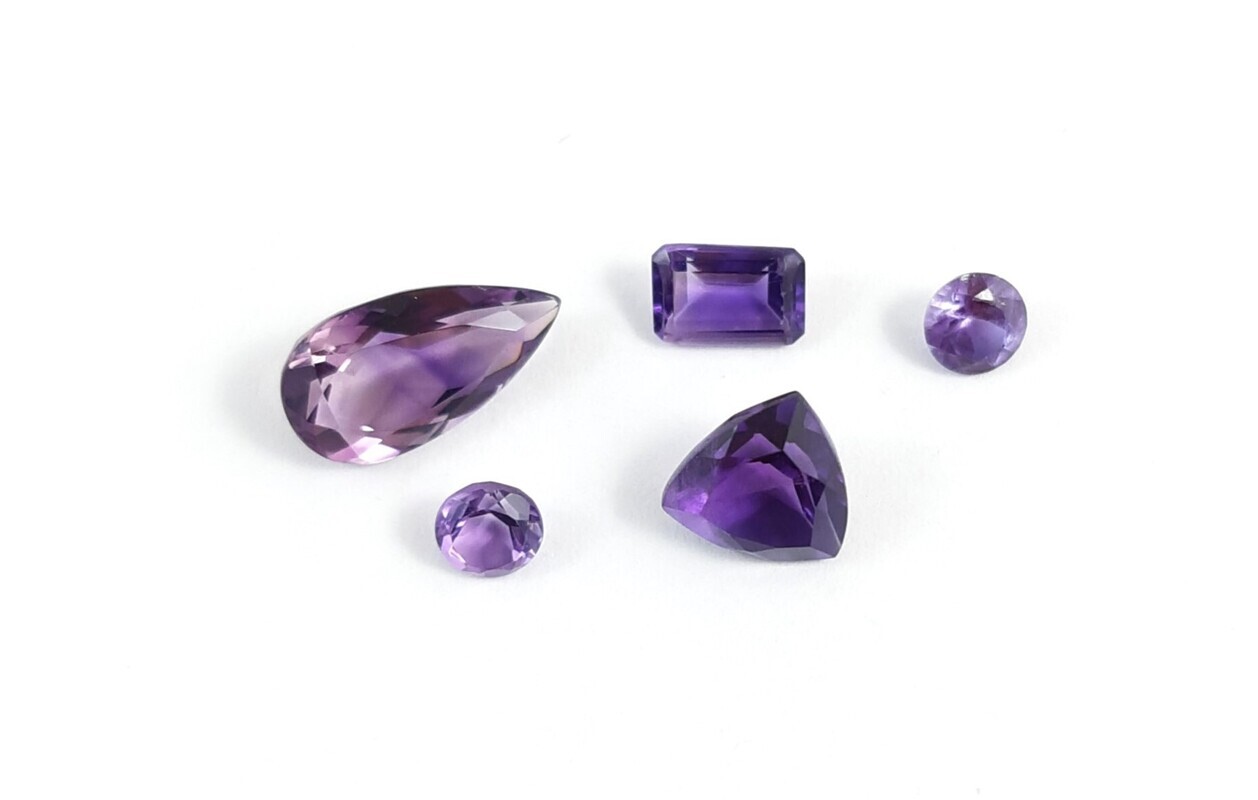As the chill of winter persists, February brings with it a touch of warmth and enchantment through its birthstone, the amethyst. With its rich violet hues, this mesmerizing gemstone embodies the essence of tranquillity, stability, and inner strength. Revered throughout history for its stunning beauty, amethyst holds a place of honour among gemstones. In this article, the custom jewellery designers of The Bench Jewellery Co. explore the allure of amethyst, its history, its properties, and the reasons why it’s the perfect gift for those born in February.
Amethyst in History
The amethyst boasts a storied past, intertwined with myths, legends, and the rich tapestry of human history. The name “amethyst” derives from the Greek word “amethystos,” meaning “not intoxicated.” Ancient Greeks believed that wearing this stone could protect against drunkenness, a testament to its deep connection with the mind and spirit. Throughout the ages, amethyst has been associated with numerous mystical and healing properties, ranging from bringing clarity and calming emotions to enhancing creativity and spirituality.
Notably, amethysts were also highly prized by royalty, often associated with nobility, power, and wealth. Their rich purple hues adorned the crowns, sceptres, and jewellery of ancient Egyptian and European monarchs, reflecting the gem’s esteemed status across civilizations.
Regarding its status as February’s birthstone, legend has it that Saint Valentine, the patron of romantic love, wore an amethyst ring carved with the image of Cupid. This association makes amethyst a popular gift for Valentine’s Day, especially given its February birthstone status. At times, it’s referred to as St. Valentine’s Gem.
Properties of Amethyst
Amethyst is a variety of quartz, distinguished by its captivating purple coloration, which can range from light lavender to deep violet. Its color is due to irradiation, impurities of iron, and in some cases other transition metals and the presence of other trace elements, which result in complex crystal lattice substitutions. This gemstone ranks 7 on the Mohs scale of hardness, making it relatively durable and suitable for a variety of jewellery applications.
Geographical Sources
The quest for amethyst takes us around the globe, with significant deposits found in Brazil, Uruguay, Africa, and parts of Russia. Each location yields amethysts with unique characteristics, from the pale lilac shades of African mines to the deep, rich purples unearthed in South America.
The largest amethyst geode ever discovered, known as the “Empress of Uruguay,” stands over 3 meters tall and weighs 2.5 tons. This breathtaking geode showcases the stunning beauty and grandeur of amethyst on a magnificent scale.
Other Interesting Amethyst Facts
- Leonardo da Vinci’s Belief: The famous Renaissance artist and inventor, Leonardo da Vinci, wrote that amethysts enhance intelligence and protect against evil thoughts. He believed in the stone’s ability to sharpen the mind and dispel negative thoughts.
- February’s Ancient Guardian: Amethyst is not only the birthstone of February but also traditionally given on the 6th and 17th wedding anniversaries as a symbol of lasting love and commitment.
- A Versatile Palette: While most famous for its purple color, amethyst can display a range of shades from almost transparent light pinkish violet to deep purples. The presence of manganese in the quartz determines the intensity of the color, while iron content varies the shade of purple.
- Catholic Bishops’ Stone: In the Catholic Church, bishops traditionally wear rings set with amethyst as a symbol of spirituality and humility. This tradition underscores the gemstone’s historical significance and its connection to the divine.
- A Multifaceted Symbol: Beyond its beauty, amethyst carries diverse meanings across cultures, including peace, courage, and stability. It’s believed to promote clarity of mind and sober thinking, making it a favourite among those seeking mental balance and calm.
- Thermal Color Change: Some amethysts can change color when heated. Heating can lighten the color, or change it to yellow, green, or even clear in some cases. This characteristic has been utilized in gem treatments and is a fascinating aspect of the gem’s physical properties.

Amethyst in Jewelry
Amethyst’s versatility and beauty make it a favourite for jewellery designers and wearers alike. Whether set in rings, necklaces, bracelets, or earrings, amethyst adds a touch of elegance and sophistication to any piece. Its range of tones complements both silver and gold settings, making it a versatile choice for various styles and occasions.
Caring for Your Amethyst
To ensure your amethyst jewellery remains vibrant and clear, proper care is essential. Avoid exposing amethyst to direct sunlight for prolonged periods, as it can cause the color to fade. When cleaning, use warm soapy water and a soft brush, avoiding harsh chemicals. Store your amethyst pieces separately to prevent scratches from harder gems.
Conclusion
Amethyst, the birthstone of February, is more than just a gemstone; it is a symbol of peace, clarity, and creativity. Its rich history and the lore that surrounds it make it an even more intriguing choice for those born in this month. Whether you’re seeking a piece of jewellery to celebrate a February birthday or simply wish to add this captivating gem to your collection, amethyst offers a unique blend of beauty, durability, and mystique. Visit The Bench Jewellery in Kamloops, Kelowna, and Chilliwack to design your custom amethyst jewellery to capture the essence of February.

